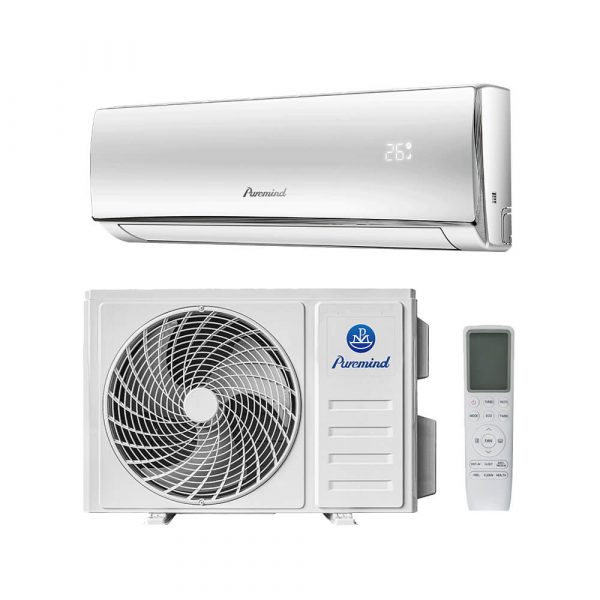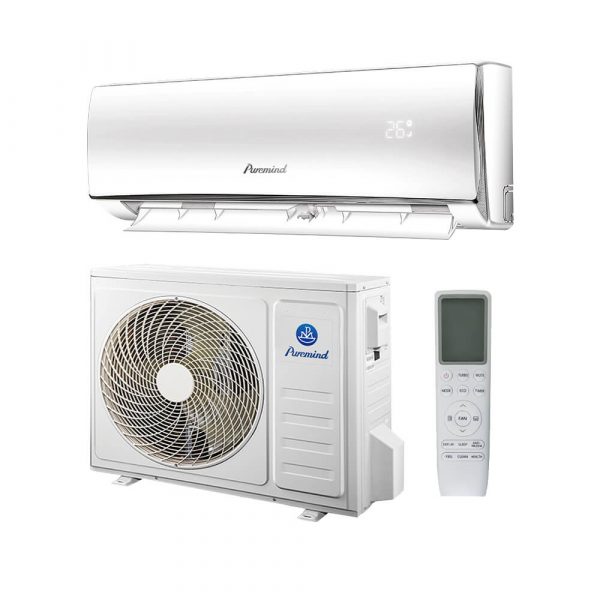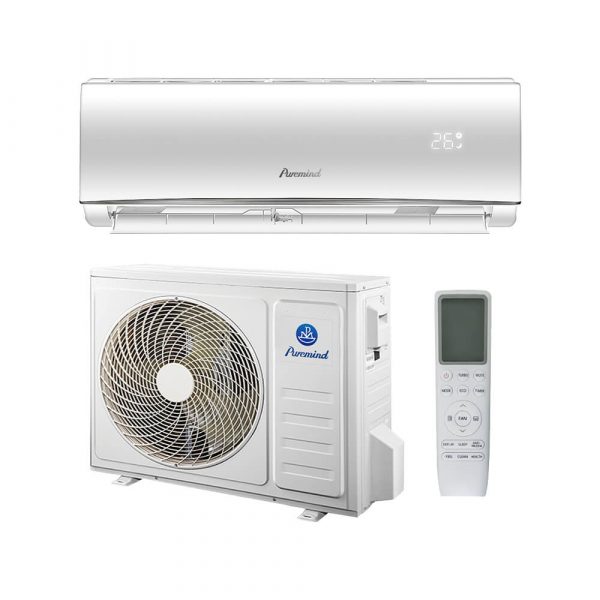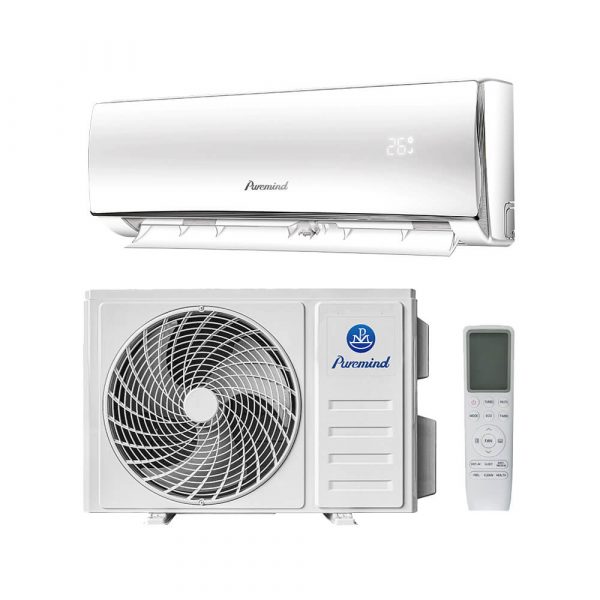Mitsubishi Split Unit Air Conditioners: Smart Cooling for Business Efficiency
As commercial buildings demand smarter, more efficient HVAC systems, Mitsubishi split unit air conditioners have emerged as a top choice for reliability, scalability, and energy performance. This guide explores how these systems work, their unique features, and why they’re well-suited for B2B environments—from offices and showrooms to industrial facilities.
What Are Mitsubishi Split Unit Air Conditioners?
Mitsubishi split units are ductless HVAC systems consisting of two main components:
- Indoor Unit (Air Handler): Mounted on a wall or ceiling to deliver cooled or heated air.
- Outdoor Unit (Compressor/Condenser): Exchanges heat with the external environment.
These systems use advanced inverter-driven compressors and refrigerant lines instead of ducts, resulting in greater efficiency and zoning flexibility.
Key Features of Mitsubishi Split Systems
What sets Mitsubishi split unit air conditioners apart from standard split systems is a combination of cutting-edge technology and design:
- Inverter Technology: Automatically adjusts output to match the required load, reducing energy waste.
- Multi-Zone Capability: Connect multiple indoor units to one outdoor unit, enabling independent temperature control.
- Hyper-Heating Function: Maintains heating capability even in sub-zero temperatures (down to -13°F / -25°C).
- Whisper-Quiet Operation: Indoor units run as low as 19 dB, making them ideal for offices and customer-facing areas.
- Smart Control Integration: Compatible with Kumo Cloud, Alexa, and Building Management Systems (BMS).
Advantages for Commercial Applications
Mitsubishi split systems are widely adopted in commercial and industrial sectors due to their adaptability and performance. Here’s how they add value:
1. Improved Energy Efficiency
Inverter-driven compressors adjust in real time, reducing power spikes and cutting monthly energy bills by up to 40% compared to fixed-speed units.
2. Modular Scalability
Perfect for multi-room or multi-tenant spaces. Businesses can start with a few zones and expand later as operations grow.
3. Targeted Comfort Zones
Individual control over each indoor unit ensures optimized comfort for offices, conference rooms, retail areas, or server rooms.
4. Environmentally Friendly
Many Mitsubishi models use R32 refrigerant, which has a lower global warming potential (GWP) than older refrigerants like R410A.
Industries That Benefit the Most
- Hospitality: Hotels and guesthouses benefit from quiet operation and guest-specific climate control.
- Education: Classrooms, labs, and administrative buildings require different comfort levels and schedules.
- Retail: Stores and showrooms can cool only occupied zones, lowering operating costs during off-hours.
- Healthcare: Clinics and outpatient centers benefit from precise temperature control and air quality management.
Comparison: Mitsubishi Split Units vs. Traditional Systems
| Feature | Mitsubishi Split Unit | Traditional Ducted System |
|---|---|---|
| Energy Efficiency | Very High (SEER 20+) | Moderate (SEER 13–17) |
| Zoning | Independent zone control | Single-zone or limited zones |
| Installation Time | Quick with minimal disruption | Time-consuming; requires ductwork |
| Maintenance | Easy filter cleaning; fewer components | Complex duct inspection and maintenance |
| Smart Control Integration | Yes (Kumo Cloud, Alexa, BMS) | Limited |
| Initial Cost | Higher upfront | Lower initial investment |
| Long-Term ROI | High (3–5 year payback) | Moderate |
Integration with Renewable Energy
Mitsubishi split systems can be paired with solar energy setups to reduce electricity dependence. Many commercial users integrate these units into off-grid or hybrid systems to meet environmental goals and qualify for government rebates.
If you’re planning to implement a solar HVAC system, explore options at Puremind’s split air conditioner catalog to find solar-compatible models.
Installation Considerations
While Mitsubishi split units are easier to install than ducted systems, proper planning is crucial:
- Consult with certified Mitsubishi installers to ensure accurate sizing and placement.
- Plan for refrigerant line routes and electrical connections.
- Verify local building codes and energy efficiency rebates available in your region.
Maintenance Best Practices
- Clean indoor unit filters every 3–4 weeks.
- Have the outdoor unit inspected every 6 months.
- Check refrigerant levels and system pressure annually.
- Use Mitsubishi diagnostic tools for proactive monitoring.
Case Study: Multi-Tenant Office Retrofit
A mid-sized real estate firm managing a 5-story commercial building upgraded from a centralized ducted system to Mitsubishi split units across 40 rooms. Each tenant gained individual control and better energy usage transparency.
Results:
- Utility costs reduced by 38%
- Tenant satisfaction ratings improved by 47%
- Return on investment achieved within 2.7 years
Why Choose Mitsubishi Over Other Brands?
Mitsubishi Electric has a proven track record in commercial HVAC systems. Compared to generic or lower-cost alternatives, Mitsubishi offers:
- Superior build quality and durability
- Extensive dealer and service network
- Advanced controls and integrations
- Extended warranties and support programs
For businesses looking to future-proof their climate control systems, Mitsubishi represents a premium, high-performance solution that delivers measurable value.
Explore Split Unit Solutions from Puremind
Whether you’re designing a new workspace or upgrading an older building, Puremind offers a curated line of split air conditioner systems that meet diverse commercial needs. Our portfolio includes solar-ready, multi-zone, and OEM-customizable options.
Conclusion
Mitsubishi split unit air conditioners offer businesses an exceptional blend of energy savings, intelligent control, and flexible scalability. Their reliability and engineering excellence make them a strong contender for any commercial HVAC project.
For B2B buyers seeking long-term performance and environmental responsibility, investing in Mitsubishi split systems—especially when integrated with solar solutions—can lead to lower costs, higher comfort, and a greener brand footprint.







